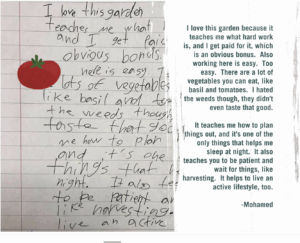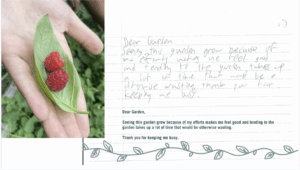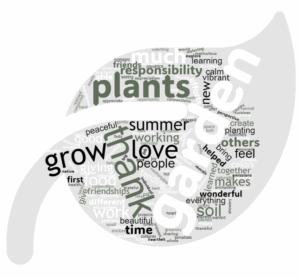Final report for YENC24-216
Project Information
The Urban Food & Ecology Project is a collaboration of seven organizations, representing diverse cultures. Our summer YOUTH STEWARDS will enjoy hands-on experiences in community gardens and at Prairie Rose Farm, under leadership from farmers and gardeners with decades of experience in Sustainable Agriculture.
1. Introduce underserved BIPOC youth and their families to sustainable community gardening and farming to ensure they have access to fresh food and build a sustainable local food system that unites small-scale new farmers with urban gardeners.
- Increase sustainable farming/gardening skills of 12-20 high school students through hands-on work with urban and rural organic and regenerative farmers and gardeners
- Introduce youth to Food and Ecology career opportunities through interviews and 3 hands-on projects with farmers, grocers, food pantries, and chefs.
4.. Increase agricultural and environmental awareness/literacy, including regeneration, soil health, carbon sequestration, bioremediation, perennial crops, pollinators, and climate adaptations.
Educational & Outreach Activities
Participation summary:
In-person hands-on events that hand participants trying out new skills in real time.
- Host webinar or in-person workshop
Learning Outcomes
- Ecological restoration – 10 steps 1. Connect with Community Partners; 2. Study Species, Communities, Habitats at natural areas; 3. Site History; 4.Site analysis—vegetation, soils, hydrology, sun-shade, foot traffic, etc.; 5. Design the planting, placement, species selection, sharing the design (Charette); 6. site prep-; 7. Planting transplants or seeds; 8.Maintain: invasives, watering; 9. Use for research projects -like plant diversity in lawns and prairie; 10. Learn: phenology, languages, literature, creative writing, propagation of plants, watersheds, eco-literacy, climate considerations.
Growing vegetables, harvesting, taking to food pantry
Composting, with manure, veg. scraps, worms, teas.
Farming as a career
Cover crops
Culinary skills
This year, we had 16 kids (up from 5 last year!), including nine young women and 7 young men. We refer to our participants as Youth Stewards.
Not many of our students have had previous gardening experience, so it was a real opportunity for them to see farm to table, and all the career opportunities that are included in the farm to table process. They talked with some emerging farmers at our incubator farm; gardeners; permaculturalists; researchers and educators who presented the Earth Partnership curriculum; chefs; composters; and others.
This multi-week summer program includes hands-on learning time by visiting area farms (in both rural and urban spaces), service projects (such as volunteering in our community gardens), group and individual projects; and a curriculum.
- Those first days are spent visiting other sites – three intensive weeks, and week one is a lot of time visiting sites, --Audubon, Fish & Wildlife, State Parks, farms and getting used to the Earth Partnership Curriculum.
- Week two is intensive work with the Earth Partnership Curriculum. We were doing this concurrently with folks from UW Landscape Architecture – they present a four day workshop, it’s meant for adults but the Youth Stewards are also participants.
- Another week the Youth Stewards visit natural areas, including the PRAIRIE Wetlands Learning Center and come to the farm. It’s a ten week program, but three are “intensives” that are all day, every day.
- The other weeks, they only work 3-4 hours per day. All of that is paid. During this time, the students engage in their projects. One project at the church was to remove asphalt and plant rain gardens. Another was a backyard garden, and a Latino group will actually take it over for the year this year, which is great. At the Baraza garden (a Congolese garden), one Youth Steward decided to learn about sustainable irrigation; he researched and implemented a whole system to make the space easier better at water conservation and more productive.
- The students also do a lot of cooking in the church kitchen. They try foods from around the world. Pic shows Kurdish chef teaching them. Some ingredients come from the garden, some from the market.
One way we evaluate success is using “Letters to the garden.” Each Youth Steward writes a letter to the garden. Each student has an individual project and group projects. They come to Prairie Farm to see things at a production scale (slide 3 = bringing hay in, which cows have been eating all winters).
Word cloud prompt was “What did you learn in the garden?”
Earth Partnership Curriculum from UW, which results in native plantings on schoolgrounds: https://earthpartnership.wisc.edu/
We like this curriculum so much that we hosted a teacher training on it. It basically goes through a ten-step process that exposes the students to everything they would need to make decisions to restore native habitat. For instance, it starts with establishing community relationships, and who can help you with this project. Then they go into studying the prairie and native plants, learning plant ID and taxonomy in established natural areas. The start to understand the native plants’ uses, as well as a history of what plants where here before development via maps, original sources, oral histories, etc. It culminates in the students doing site analysis, evaluating soils and hydrology, etc. Then they do a design step, and develop (in small groups) a native garden plan on their school garden. They host a design charette with the other student groups, where their peers highlight what they like about the designs. Then, the best ideas from all designs are put together. They draw it out on graph paper, in proportion. Then the students actually lay out the plan on the ground using a map, compass, measuring, etc. There is a caller, and people with square feet of cardboard on their feet. The caller might say “I need six square feet of X in the northwest corner.” Finally, the prep the site and actually plant it.
It has been implemented in 23 states, plus Puerto Rico, Nicaragua, Dominican Republic, Mexico, Ecuador and Kurdistan.
Project Outcomes
Seeing the Youth Stewards’ progress and the difference they are making helps us know we’re on the right track as an organization.


